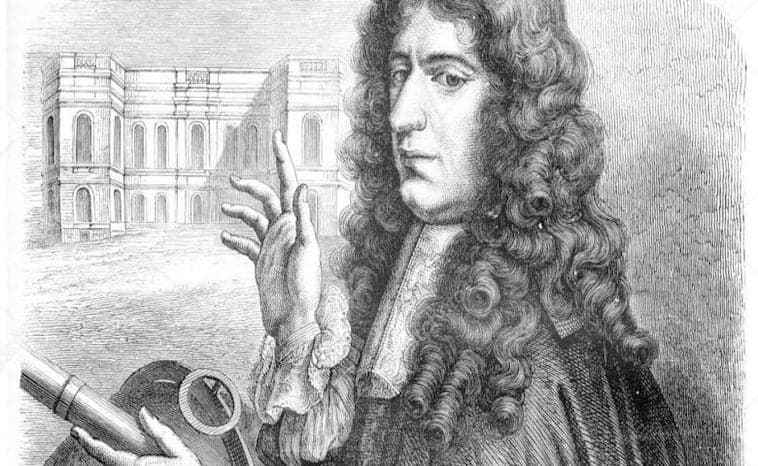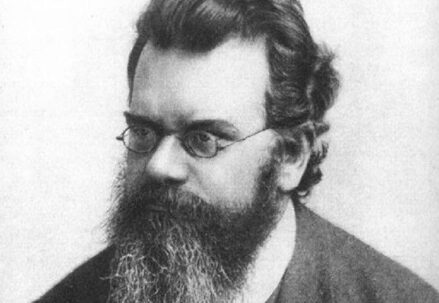Giovanni Domenico Cassini, a trailblazer in the 17th-century world of astronomy, played a pivotal role in expanding our cosmic knowledge. Born in Italy, Cassini’s unparalleled contributions included the discovery of Saturn’s moons and the intricate analysis of its ring system. His work not only revolutionized our understanding of Saturn but also laid the groundwork for subsequent astronomical explorations. His legacy is a testament to the power of human curiosity and the pursuit of knowledge, illustrating how one individual’s dedication can illuminate the mysteries of the cosmos.
Early Life and Academic Pursuits
Born in the Italian region near Imperia, Cassini’s early exposure to the sciences fueled his lifelong passion. His academic journey began at the Jesuit College in Genoa, where he nurtured a deep interest in mathematics and astronomy. This educational foundation led him to San Fructuoso and eventually to an observatory near Bologna. Under the mentorship of Cornelio Malvasia, Cassini began to carve his niche in the world of astronomy, setting the stage for his future groundbreaking discoveries and contributions to the field.
Cassini’s Contribution to the Paris Observatory
The year 1669 marked a turning point in Cassini’s career when he was invited to Paris by the astronomer Colbert. Tasked with a significant role in establishing the Paris Observatory, Cassini embraced French culture and citizenship, becoming a pivotal figure in French astronomy. As director of the observatory, he not only oversaw its operations but also continued his research, making Paris a hub for astronomical discovery. His transition to France signified a blending of cultures and ideas, enriching the scientific community of the time.
The Cassini Division: A Groundbreaking Discovery
The discovery of the Cassini Division was a defining moment in Cassini’s career. Using a refracting telescope at the Paris Observatory, he identified the 4800 km gap between Saturn’s rings A and B. This finding shed light on the complex dynamics of Saturn’s rings and introduced the concept of orbital resonance in these celestial structures. His observations revolutionized our understanding of planetary ring systems, proving that they were more intricate than previously thought.
Exploration of Saturn’s Moons
Cassini’s astronomical pursuits were not limited to Saturn’s rings; his exploration of Saturn’s moons marked a significant advancement in our solar system’s understanding. He discovered Iapetus, Rhea, Tethys, and Dione, each unveiling unique characteristics of Saturn’s satellite system. His methods, including the meticulous tracking of Jupiter’s Great Red Spot to determine orbital periods, demonstrated his innovative approach to celestial observation and paved the way for future discoveries in planetary science.
The Cassini-Huygens Space Probe: A Lasting Tribute
The Cassini-Huygens Space Probe, launched in 1997, was a tribute to Cassini’s contributions to astronomy. It was the first probe to enter Saturn’s orbit, providing detailed insights into the planet, its rings, and its moons. This mission symbolized the culmination of Cassini’s work, bringing his theories and observations to life and offering a new depth of understanding about one of our solar system’s most intriguing planets.
Continuing the Cassini Legacy in Astronomy
Giovanni Cassini’s legacy extends beyond his discoveries. He established a lineage of astronomers, often referred to as Cassini I, marking the beginning of an influential era in astronomical exploration. His descendants continued his work, contributing significantly to the field and ensuring that the Cassini name remained synonymous with astronomical excellence and discovery.
Comparative Table: Cassini’s Discoveries vs. Modern Discoveries
| Feature | Cassini’s Discoveries (17th Century) | Modern Discoveries (20th and 21st Century) |
|---|---|---|
| Instruments Used | Early refracting telescopes | Advanced space telescopes, probes |
| Saturn’s Moons Discovered | Iapetus, Rhea, Tethys, Dione | Additional moons, detailed surface analysis |
| Ring System Analysis | Identification of the Cassini Division | Detailed composition and structure analysis |
| Methodology | Ground-based observations | Space missions, computer simulations |
| Impact on Astronomy | Fundamental breakthroughs | Detailed and expansive understanding |
Key Aspects of Cassini’s Work
- Pioneering Observational Techniques: Cassini’s innovative use of telescopes and observational methods laid the groundwork for modern astronomy;
- Discovery of Saturn’s Moons: His identification of several of Saturn’s moons expanded our knowledge of the planet’s satellite system;
- Analysis of Saturn’s Rings: Cassini’s discovery of the Cassini Division revealed the complexity of Saturn’s ring system;
- Cultural and Scientific Integration: His assimilation into French culture and astronomy bridged a gap between the two nations, fostering scientific collaboration;
- Legacy in Space Exploration: The Cassini-Huygens Space Probe serves as a lasting tribute to his work, continuing the exploration of Saturn.
Learning Astrophysics: An Invitation
Inspired by Cassini’s profound contributions, a series of 30 comprehensive articles on astrophysics is offered for free to enthusiasts and aspiring astronomers. Covering a wide range of topics from basic celestial objects to complex theoretical concepts, this series aims to spread knowledge and ignite a passion for the cosmos, much like Cassini’s work did centuries ago.
Video Guide
To answer all your questions, we have prepared a video for you. Enjoy watching it!
The Intersection of Cassini’s Work with the Ozma Problem
Intriguingly, the astronomical discoveries of Giovanni Cassini offer a unique perspective on the Ozma Problem, a theoretical challenge in astrophysics regarding the communication of spatial concepts like left and right across interstellar distances. Cassini’s detailed study of Saturn and its moons provides a practical framework for understanding this problem.
- Spatial Orientation in the Cosmos: Cassini’s precise mapping of Saturn’s rings and moons contributed significantly to our understanding of spatial orientation in the vastness of space, a fundamental aspect of the Ozma Problem;
- Astronomical Landmarks for Interstellar Communication: The detailed observations made by Cassini could serve as reference points in the universe, potentially aiding in the establishment of a universal spatial language, crucial for addressing the Ozma Problem;
- Cassini’s Legacy in Cosmic Exploration: The data gathered from Cassini’s explorations, particularly through the Cassini-Huygens probe, could provide extraterrestrial civilizations (should they exist and be able to observe Saturn) with a shared point of reference for spatial orientation;
- Influencing Modern Astrophysical Theories: The work of Cassini, by enhancing our understanding of the solar system, indirectly supports efforts to solve complex theoretical problems like the Ozma Problem, demonstrating the interconnectedness of different fields within astronomy and astrophysics.
Conclusion
Giovanni Cassini’s journey through the realms of astronomy underscores the enduring impact of curiosity and dedication. His pioneering work in the 17th century set the stage for centuries of astronomical exploration, proving that the quest for understanding our universe is both timeless and boundless. Cassini’s legacy is not just in the discoveries he made but also in the inspiration he continues to provide to astronomers and scientists, encouraging them to look beyond the horizon and explore the unknown.





